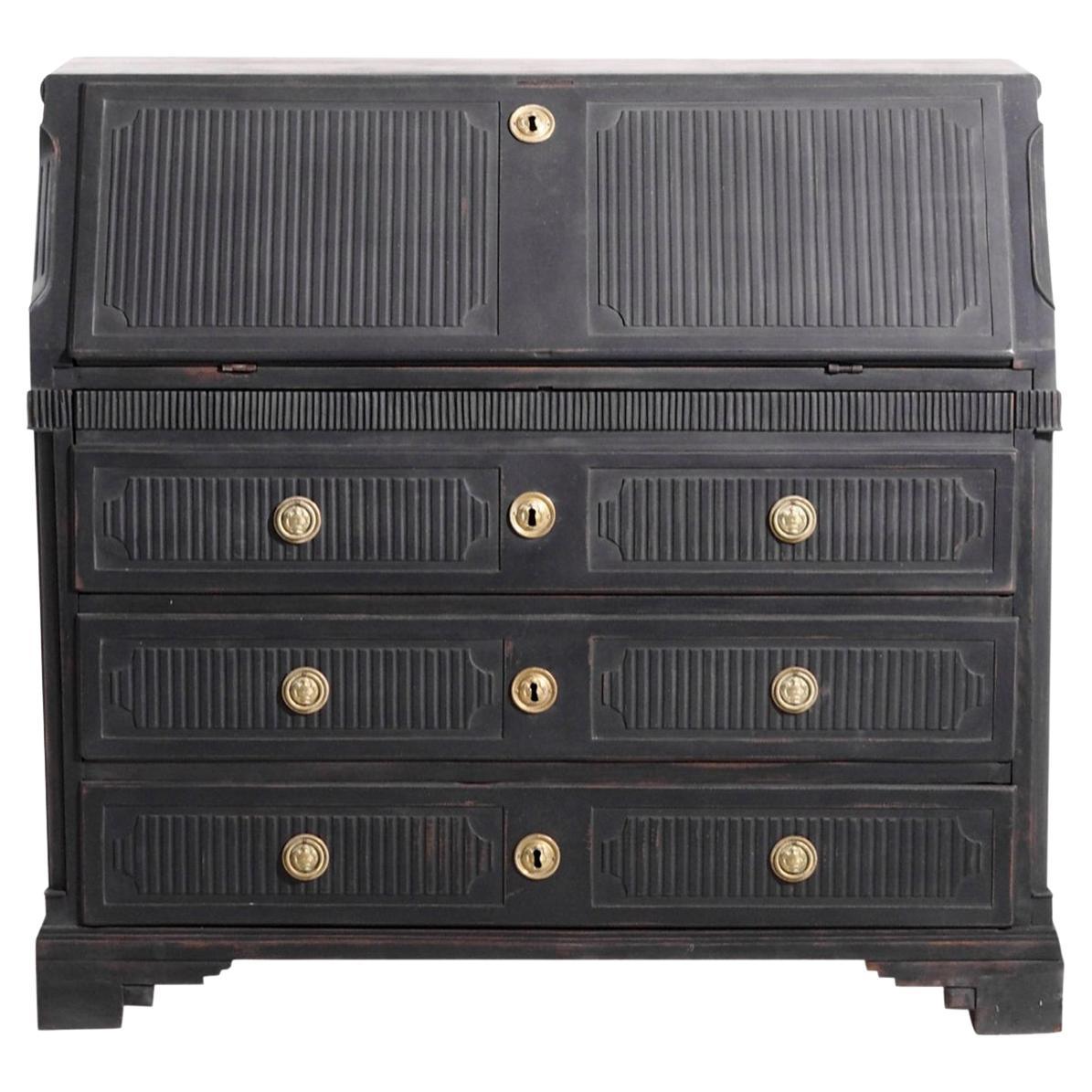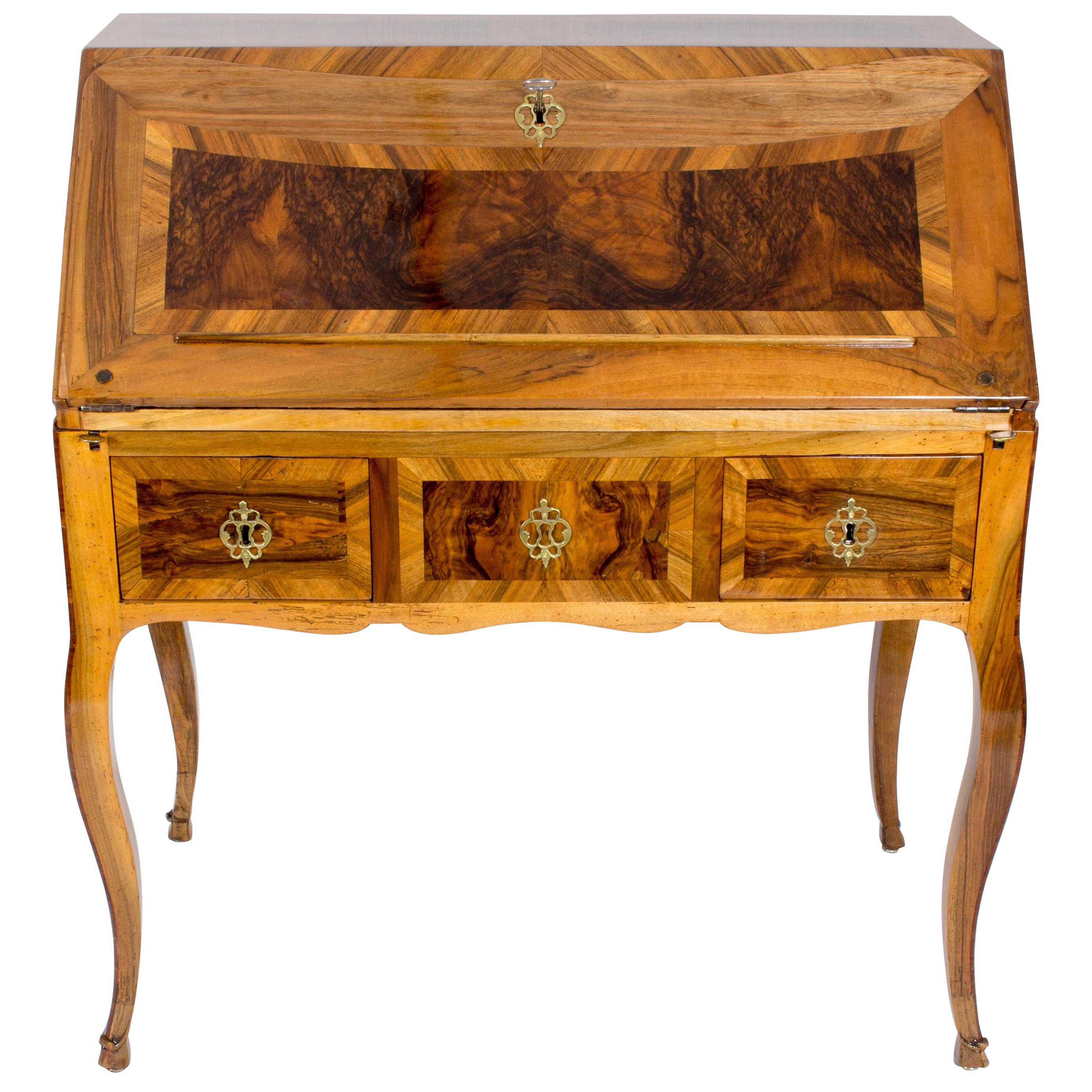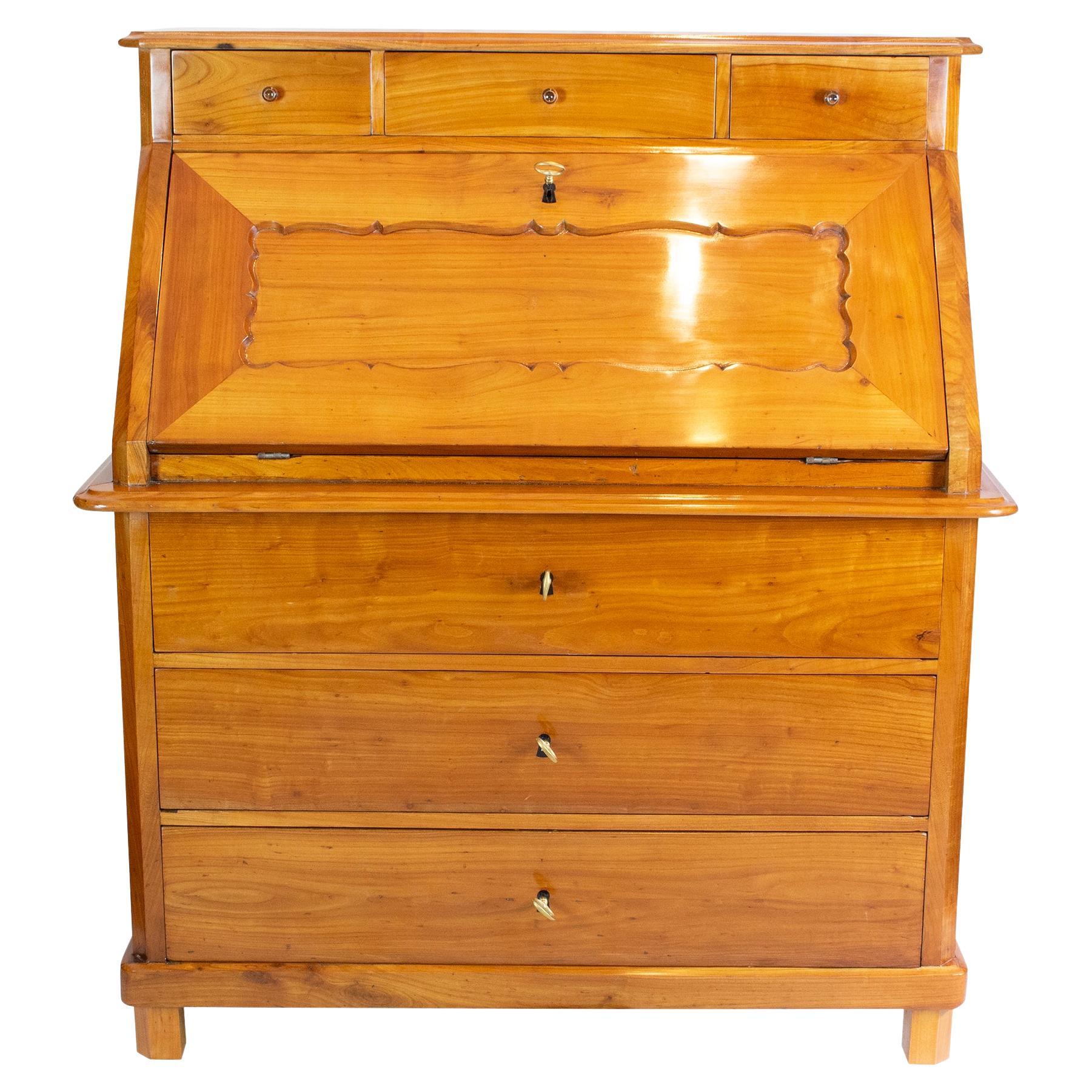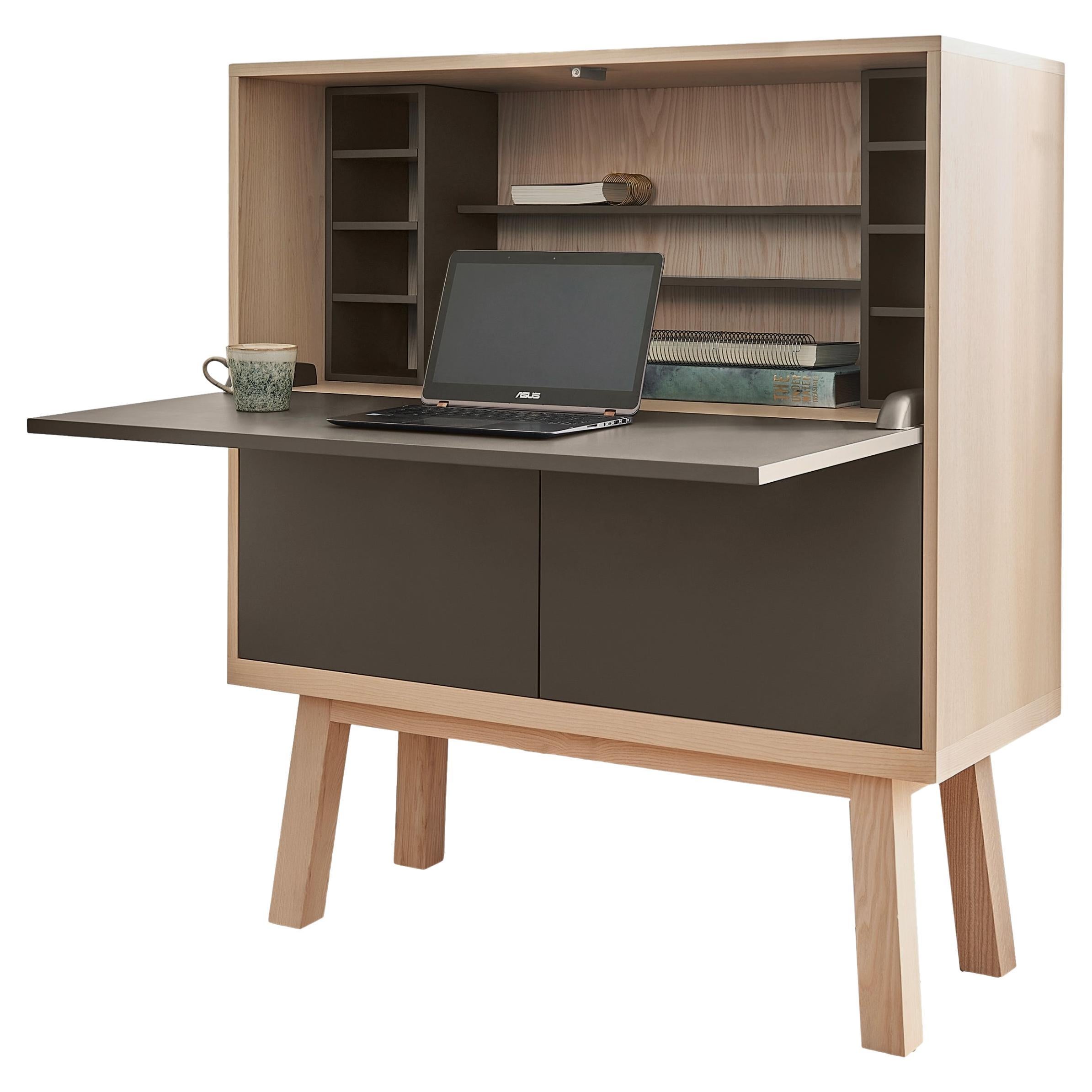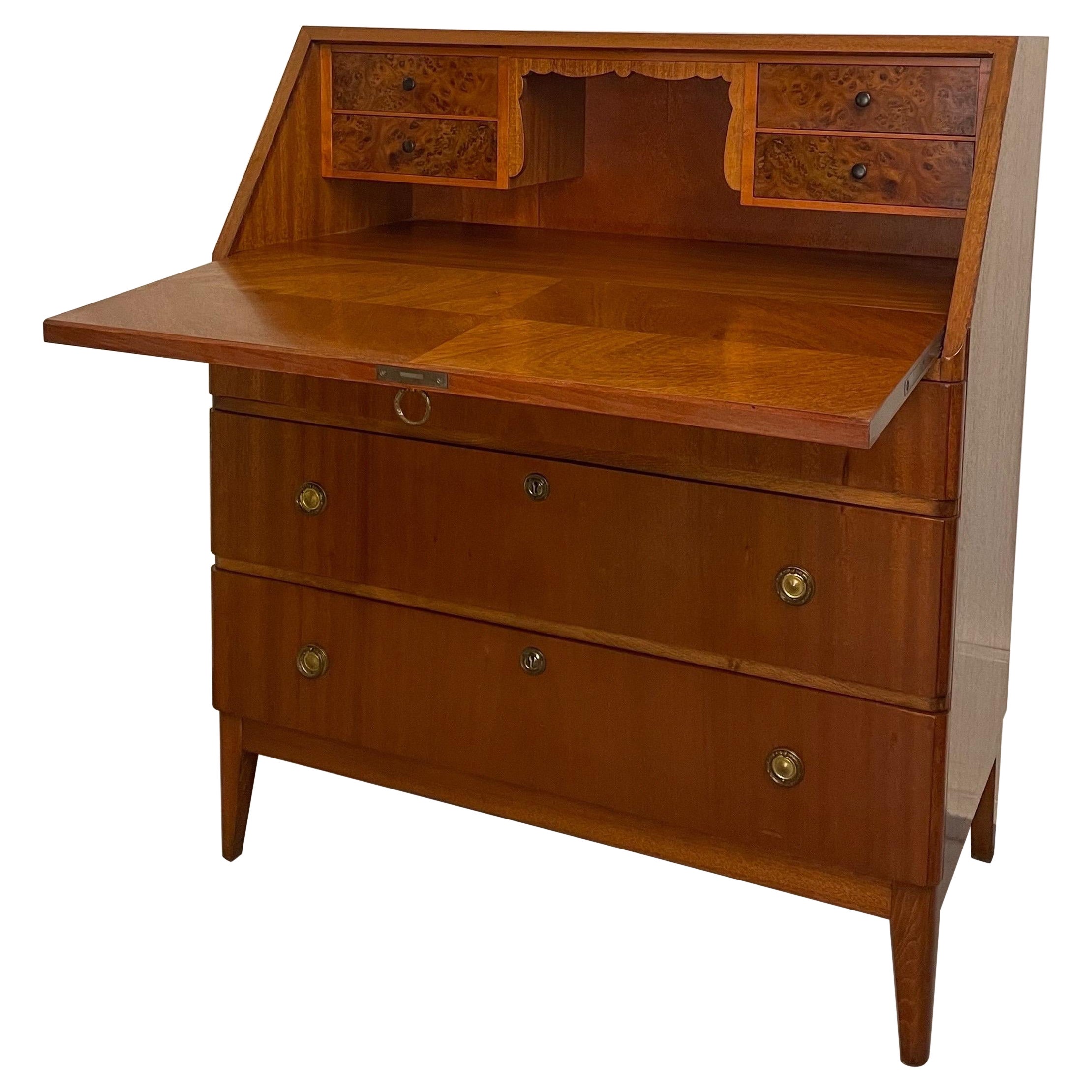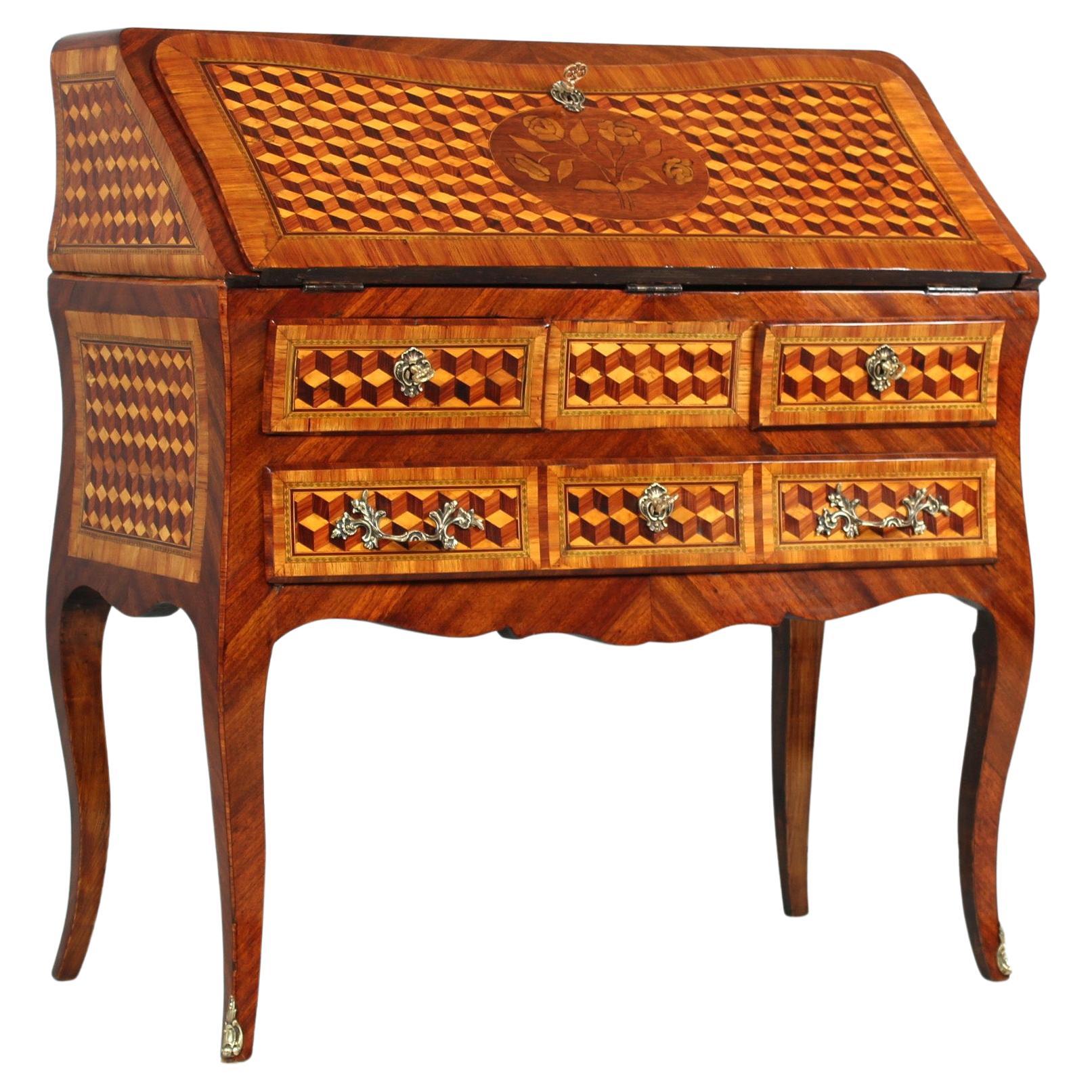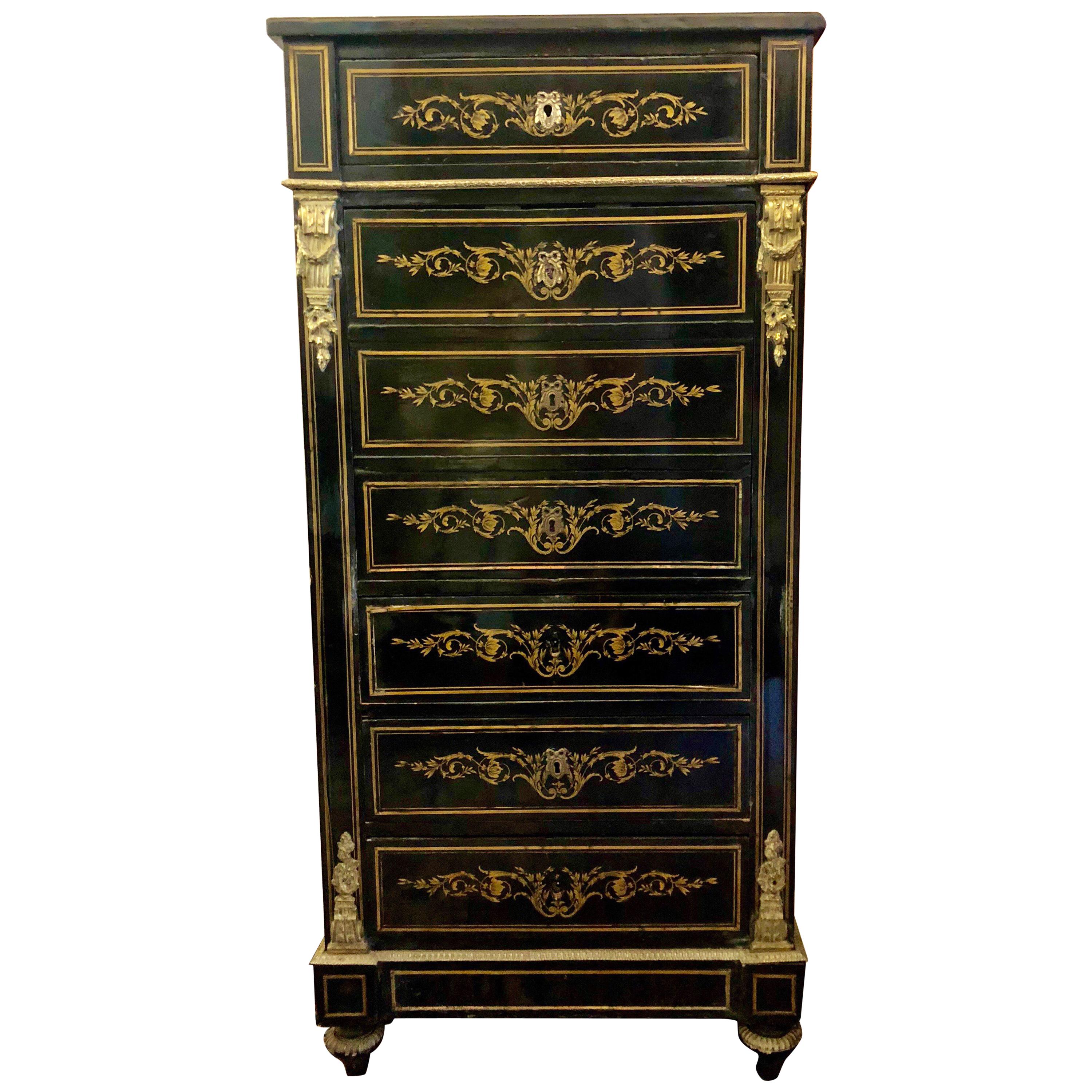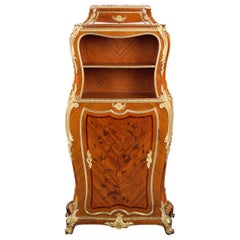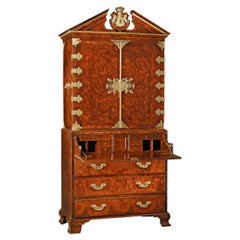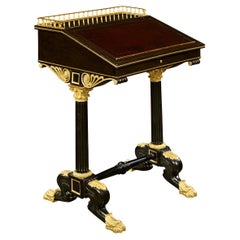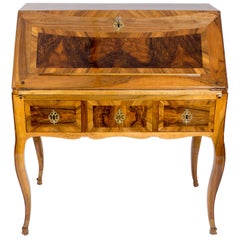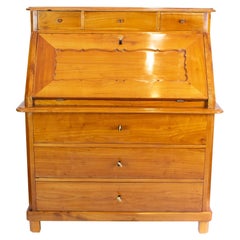
French Tambour-Front Secretaire
View Similar Items
Want more images or videos?
Request additional images or videos from the seller
1 of 7
French Tambour-Front Secretaire
About the Item
- Dimensions:Height: 45.25 in (114.94 cm)Width: 27 in (68.58 cm)Depth: 14 in (35.56 cm)
- Style:Louis XV (In the Style Of)
- Materials and Techniques:
- Place of Origin:
- Period:
- Date of Manufacture:circa 1860
- Condition:
- Seller Location:New Orleans, LA
- Reference Number:Seller: 30-79841stDibs: LU891119033182
About the Seller
5.0
Recognized Seller
These prestigious sellers are industry leaders and represent the highest echelon for item quality and design.
Established in 1912
1stDibs seller since 2010
92 sales on 1stDibs
Typical response time: 5 hours
More From This SellerView All
- 19th Century French Secrétaire by DurandBy Gervais DurandLocated in New Orleans, LASuperior craftsmanship and intricate marquetry characterize this rare secrétaire by Gervais-Maximilien-Eugène Durand, one of the most popular French ébénistes of the 19th century. Th...Category
Antique 19th Century French Louis XV Secretaires
MaterialsBronze, Ormolu
- King George I Ambassadorial Secrétaire-CabinetLocated in New Orleans, LAThis highly important secrétaire-cabinet was crafted for and specially ordered by King George I for the British Ambassador to Russia. From its craftsmanship and materials to its exceptional artistry, it is a work of royal and historic significance that exudes power in each and every detail. The broken pediment at its apex features the simplified royal coat of arms bearing the king’s crown, while the interior is adorned by portraits of the British Royal Family. Placed within the ambassador’s St. Petersburg home, this entirely unique piece of furniture would have been a potent reminder of England's grandeur and political importance. Relations between England and Russia during this period were at an all-time high. Peter the Great had traveled to England in 1698 as part of his widely known “Grand Embassy” tour, wherein he attempted to gain foreign support against the Ottoman Empire. He spent a period of nearly four months there, meeting with King William III and his court on numerous occasions. Noted academic Arthur MacGregor wrote concerning the impact of the trip, “For two decades following Peter's visit, British influence in Russia reached a peak. It manifested itself in social custom, in craft practice and in ships and naval organization... it reached a significant sector of the population before relations cooled once again and the two nations pulled back from this era of unprecedented cordiality.” First and foremost, however, it is a reminder of British might and influence. By the reign of King George I, England had come into its own as a world power. Unique in its design, this cabinet is a reflection of the country’s might. It is crafted from the highest-quality solid walnut and burr walnut adorned by gilded lock plates and engraved hinges. The presence of ormolu at its apex and lining the doors was a rarity for this period, and its addition makes manifest the importance of the design. The outer doors open to reveal multiple interiors, including fifteen separate drawers around a central cupboard; the cupboard doors each bear mezzotint portraits of George I and his father, Ernest Augustus, Elector of Hanover. An etching after the portrait of George I dating to circa 1716 is in London’s Royal Academy. A second, inner pair of doors are adorned by mezzotints of the Prince and Princess of Wales (later Queen Caroline and George II), which are both after portraits by Sir Godfrey Kneller dated 1716 in the Royal Collection. A final portrait is revealed on the very interior of the cabinet, where a mezzotint of Frederick, Anne, Amelia and Caroline, children of the Prince of Wales, resides. An etching (circa 1715-1720) after this portrait can be found in the National Portrait Gallery (London). Apart from its abundance of royal portraiture, the cabinet features stunning painted decoration, including floral designs as well as clouds, birds and trees in a bucolic motif reminiscent of Eden. Its lower portion is a study in both form and function, featuring a fitted secrétaire-drawer above three additional drawers for storage. The cabinet appears in The Shorter Dictionary of English Furniture by R. Edwards from 1964, a text that is regarded as the bible of British furniture design. Edwards describes it as a “writing cabinet...given by George I to the British Ambassador at the Russian court.” The cabinet was likely made for the 18th-century German diplomat and writer Friedrich Christian Weber, who represented English interests at the Russian court from 1714 until 1719. Although Weber’s tenure as ambassador was relatively short, while in St. Petersburg, he authored his account entitled Das veraenderte Russland (The Present State of Russia), which was published in three volumes in 1721, 1739 and 1740. It may, however, also have been made for George Douglas, 2nd Earl of Dumbarton, who served as ambassador alongside Weber in 1716. Diplomatic relations ceased between the two countries in 1721. In 1928, the cabinet appeared for sale at the International Exhibition of Antiques & Works of Art in Olympia. It had previously been in the collection of the Woltner family of Bordeaux, the celebrated vintners who owned the estate Château Laville Haut-Brion and produced wine of the same name. According to the family, Monsieur Woltner was given the cabinet as a gift from an aunt who lived in Russia for many years. After leaving the Woltner collection, the cabinet was acquired by William Berry...Category
Antique 18th Century English Georgian Secretaires
MaterialsBrass
- French Charles X Writing DeskLocated in New Orleans, LAThe epitome of French elegance and style, this French Charles X-style writing desk takes the classic design of English Davenport desks to new heights. The table is exquisitely crafted of the finest Ceylon ebony...Category
Antique 19th Century French Charles X Desks and Writing Tables
MaterialsBronze
- 18th Century English SecretaryLocated in New Orleans, LAQueen Anne period furnishings such as this walnut secretary are incredibly rare and important examples of English cabinetmaking. This secretary is of the most outstanding caliber, boasting desirable double bonnet, mirrored cabinet doors...Category
Antique 18th Century English Queen Anne Secretaires
MaterialsWalnut
$88,500 - Louis XV Style Writing Desk by François LinkeBy François LinkeLocated in New Orleans, LASuperior craftsmanship and elegant bronze work characterize this tambour front roll top writing desk by François Linke, the most important French ébéniste of his time. Linke is celeb...Category
Antique Late 19th Century French Louis XV Desks
MaterialsBronze
- Sèvres Porcelain-Mounted Bureau PlatBy Manufacture Nationale de SèvresLocated in New Orleans, LAForm and function converge in this exceptional Louis XV-style bureau plat graced with eight elegant Sèvres Porcelain plaques. Framing these delightful, hand painted floral and fowl-themed plaques is a network of exquisite gilt bronze. Supporting the leather-topped table are graceful cabriole legs, a hallmark of fine Louis XV taste, that are crowned by gilt bronze caryatids and terminate in gilt bronze mounts. What makes this desk even more stunning is the inclusion of three concealed drawers that are opened only by the spring-loaded secret release mechanisms located underneath. The first porcelain mounted furnishings appeared sometime in the mid-18th century in the shops of the foremost Parisian art dealers. These furnishings successfully, and quite beautifully, married renowned Sèvres Porcelain with fine furniture to create a new segment of the decorative arts that appealed greatly to the aristocracy, especially women. The Duchesse de Mazarin, Comtesse du Barry, Marie-Antoinette and the Grand Duchess Maria...Category
Antique 19th Century French Louis XV Desks and Writing Tables
MaterialsBronze
You May Also Like
- 18th Century Louis XV Baroque Walnut Fall Front Desk/SecretaireLocated in Darmstadt, DEThe desk is from the time around 1730 and covered with a beautiful marquetry of different walnut / walnut root wood on a pine body. All three locks are original from that time as wel...Category
Antique Early 18th Century French Louis XV Desks and Writing Tables
MaterialsWalnut, Pine
$12,963 Sale Price32% Off - 19th Century Biedermeier Cherry Fall Front Desk / SecretaireLocated in Darmstadt, DEIntroducing a stunning late Biedermeier Slant-Front Secretary, crafted from solid cherry wood in the 1840s. This exquisite piece of furniture features three drawers spanning the enti...Category
Antique 19th Century German Biedermeier Desks and Writing Tables
MaterialsSpruce, Cherry
- 18th Century Black Swedish Gustavian Oak Bureau - Antique Drop Front SecretaireLocated in West Palm Beach, FLAn antique Swedish Gustavian bureau made of hand crafted painted Oakwood, in good condition. The Scandinavian writing table, desk features man...Category
Antique Late 18th Century Swedish Gustavian Secretaires
MaterialsMetal, Brass
- Chocolate Gray French large Secrétaire, Eric Gizard, ParisBy Éric GizardLocated in Landivy, FRThis large secretary desk is mounted in our French workshops and delivered fully assembled. The overall dimensions of the box itself are Widt...Category
21st Century and Contemporary French Scandinavian Modern Desks and Writi...
MaterialsWood, Ash, Lacquer
- Art Deco SecrétaireLocated in New York, NYA practical desk which leaves no aesthetic compromise with its lovely bookmatched mahogany veneer adorning both the inside and outside of the case. Internal drawers are adorned with ...Category
Vintage 1930s Swedish Art Deco Secretaires
MaterialsMahogany
$4,750 - Green Lacquered Large French Secrétaire, Designed for a Durable TeleworkingBy Éric GizardLocated in Landivy, FRThis large secretary desk is mounted in our French workshops and delivered fully assembled. The overall dimensions of the box itself are Widt...Category
21st Century and Contemporary French Scandinavian Modern Secretaires
MaterialsWood, Ash, Lacquer
